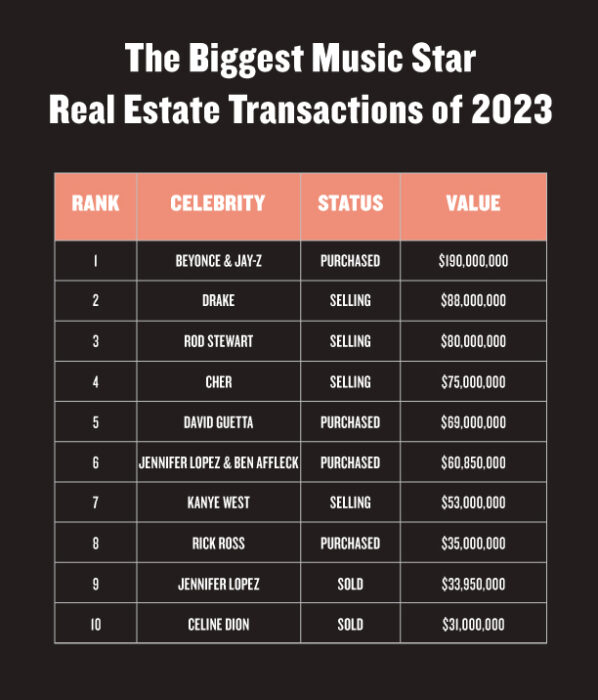This interview has been edited for length and clarity.
Commercial Observer: What is the history of Cabot Properties? How did your firm start?
Franz Colloredo-Mansfeld: The firm goes back 40 years. My father ran a big development company, Cabot Cabot & Forbes, and as part of that business he formed an investment advisory affiliate called Cabot Partners. In 1989 and 1990 that business went through restructuring. The investment advisory affiliate separated off from the development company and became an independent firm that focused on advising large institutional investors, some of whom are still with us 40 years later, like New York State Teachers’ Retirement System.
And how did you get into the industry?
The early 1990s were not a good time in CRE. At that time, I’d finished business school at Harvard and began a career at McKinsey & Company, and earlier in my career I’d been an investment banker. But my father got sick with cancer in the mid-1990s, so I left McKinsey in 1996 and joined him at Cabot Partners. It was relatively small, 17 employees, and went through a complicated restructuring, and we took the company public in 1998 as an industrial real estate investment trust.
We were an industrial REIT, a niche sector of the time. As it turns out, the year we went public in 1998, if you added up all sales online there were about $5 million in online sales, and now we’re over $2 trillion in online sales today, so the world has changed in ways that favor our sector, that’s for sure. We sold the public company in 2001, re-formed our business with a group of partners, and became a private equity fund sponsor. We sponsored our first value-add fund in 2002 and that began the series of value funds as we just finished Fund VII last year.
Was it difficult to move from investment banking and consulting into CRE finance?
Perhaps I had it in the blood. As an investment banker, I was involved in lots of financings. I was primarily in the M&A group, corporate strategy, capital fundraising related to financing transactions, and that was useful experience, for sure, as at the heart of our business we’re an investment firm making acquisitions. But the experience at McKinsey was also very helpful: How do you lead a business? How do you think about strategy? How do you position the firm? How do you build a team? Those are all things I spend time on today.
How has the industrial landscape changed since your firm went public 20 years ago?
E-commerce is a huge driver of tenant demand. The investable universe has tripled over the last 15 years due to e-commerce, and that has led to institutionalization of the industrial property sector. When we went public, industrial REITs were only 4 percent or 5 percent of the overall public market of real estate; today it’s over 30 percent. What was the gold standard at the time, office and retail, those sectors today in the public markets are quite small. And that’s true of private institutional markets.
The industrial sector is now the biggest of the four major sectors. Multifamily and industrial have emerged as the two biggest institutional property sectors, and we’ve tried to evolve our business in response to that.
Before we get into that, how has your fundraising evolved in response to that technological shift?
The amount of institutional capital looking to invest in what we do has grown dramatically. In the old days, when we were raising our first fund, you were trying to convince investors that you could generate mid-teens returns from warehouses. That wasn’t an easy pitch. And the world has changed and people now see the opportunity in our sector.
Therefore the types of investors have expanded dramatically. Initial rosters were U.S. only, they were endowments, foundations who’d support first-time funds. We’re fortunate that a lot of our capital still comes from investors who joined our first fund, but the roster of investors has broadened to include different types of investors inside and outside the U.S.
And your investment strategy? How has that evolved?
In the early days, supply chains were focused on reducing cost for inventory. You had a dynamic at play where tenants, users, were looking to maintain very low costs for their supply chains. So they’d move to the next exit to save a nickel on their rent. It was a very competitive business and the dynamic wasn’t supporting rent growth, so our focus at the time was looking for opportunities where there was some arbitrage, where tenants would favor a particular type of location and give you a premium for that rent.
And we were very focused on competitive cost basis on assets. It was a value-focused strategy. So the strategy over time has remained consistent: We obviously care about the basis of the assets, but we increasingly focus on the deepest, most liquid markets and institutional flows that come into the sector.
Which markets in particular?
The major coastal markets. The Northeast, greater New York, New Jersey, Pennsylvania — that market is very attractive to us. The Baltimore-Washington corridor is attractive, Atlanta is a major industrial hub, South Florida because of the population growth and economic dynamism. Texas — Dallas is our biggest market. Houston is an interesting market. Southern California is a big one for us. Chicago, too.
But the trends in the U.S. are now playing out globally. We have broadened our investment activity, first to England about 10 years ago, then to Northern Europe about seven years ago, and then to Australia about five years ago, and we just opened an office in Tokyo. We’re focusing on these major market economies where we see the same drivers: e-commerce, institutionalization, and the trend that’s amplified by COVID is a renewed focus on supply chains.
Tenants are focused on maintaining inventory to support their business. The warehouse rent is a small percentage of overall supply chain costs — labor costs are the biggest factor and energy costs are the second-biggest factor. So they are willing to pay premium rents to maximize those other variables. They want buildings closer to population centers and closer to their workforce.
Tell me about the Fund VII goals?
We’re trying to invest this fund at an interesting time, because pricing has improved, perhaps in a period where interest rates are still high but stabilized, so it’s easier to forecast and underwrite. We’re looking for opportunities where there is perhaps some distress among developers, or sellers of property that have portfolios unrelated to logistics, but logistics are the most liquid thing they have at the moment. So we’re anticipating that transaction volume across the U.S. will increase. The U.S. will be at least 70 percent of what we can do in Fund VII, as we do have limits on what we can do outside the U.S.
What makes international investing tougher?
In Europe, deals are very expensive. Yields have been low and growth has been weak. That dynamic is changing, though. We have an inflection point in Europe. You have increased levels of e-commerce activity, there’s more demand and more limits on supply, the development is constricted in most major markets, in Northern Europe and England. So you’ve had strong growth in the last 18 months, and pricing will adjust more quickly there.
In ways it’s more difficult than the U.S. With our institutional capital, which is primarily tax-exempt, the capital gains are not a factor for us when we invest in the U.S. But outside the U.S. we are exposed to taxes, so the hurdle rates for investments are higher for us for that reason. We are also hedging because most of our capital comes from U.S. investors, so we provide hedging for them for non-U.S. activity.
The U.S. has this advantage of being an enormously liquid, unified market, but the EU, while it’s a common currency, each country has its own regulations and tax structures, so it’s more difficult to transact in Europe and in Australia because we are managing the administration of all those transactions.
What are the downsides to private equity investing? It seems too good to be true.
I wish it were easy. Every time we raise a new fund, you’re only as good as your last fund. We’ve had the wind at our back with all the trends playing out in our sector, but there are still risks out there. The Global Financial Crisis was a very difficult time for our sector. The largest public REITs almost went bankrupt. The dynamic of the GFC was not just a drop in demand, but capital structures caused firms to go under. We had a fund we raised in 2005 — and were investing in 2006, 2007 and early 2008 — and that turned out to be top of the market. We didn’t have a loss. That fund generated a positive result, but just barely, so we learned a lot.
What lessons did you learn?
A. The capital structure. You can be a great investor, but if you don’t get the debt structure right it doesn’t matter. We had no defaults going through the GFC, but the leverage was higher and the result would’ve been better with lower leverage. We’ve since taken a more conservative approach with leverage. During the recent run-up in rates, we took leverage across our funds down — we have capacity to do that — so we learned from that type of experience.
B. Quality buildings. The quality buildings were able to maintain occupancy. Maybe you don’t get the rent growth, but if you have a high-quality building, you’ll find a tenant in that building. One reason our focus has shifted toward development is we want the highest quality across the portfolio. In our view, there’s risk in doing development, but if you choose the right location and target, the deepest segment of the tenant market, you’ll find a tenant for your building.
How has technology changed the industrial sector as an asset class?
There are different dimensions to that. Obviously, the impact on our business from e-commerce is a tech-related advancement that has been tremendously beneficial to us. The buildings themselves have evolved. There haven’t been dramatic changes but they need to appeal to major third-party logistics operators. You need more cubic space, better truck circulation, you need excellent access, and then in the last three to four years, particularly in Europe, you need a building that’s increasingly energy efficient.
So investments are made in HVAC systems, lighting systems, to reduce energy consumption, and then you have this additional opportunity to use these buildings to provide solar power to tenants or to communities.
Sounds like a fascinating sector. How do you see non-industrial assets shaking out?
In our sector, there wasn’t a lot of distress, but there was a reset of pricing. In multifamily and office, you’ve had more pressure emerge from higher rates and lower yields. In multifamily, you’ve seen supply issues, and rent levels in many markets have not been growing. So that puts pressure on investors in those businesses. But in 2024 there will be opportunities for investors in that business.
Office is more difficult. There are major structural factors at play, and a dynamic where it’s under-demolished. And so there needs to be an adjustment as buildings are repositioned as multifamily buildings or repurposed. I think that is years away, and I think you’ll find people make very strong returns, but you need a long time frame and patient capital to benefit.
Last question: What are your hobbies?
I’ve got four kids, they’re all grown now, so I like to chase them around, and I also have a grandson. I enjoy that a great deal. I like doing things with them. They are all skiers, all four kids are racers, skiing is a big part of our lives in the winter. We live on a farm north of the city that has been in our family for four generations, and it’s a shared passion. It’s mostly a horse farm, but it’s great to have these common pursuits.
Brian Pascus can be reached at bpascus@commercialobserver.com.
















